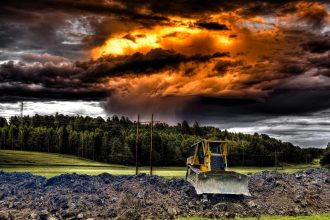Good outdoor drainage is one of the most critical, yet, ignored aspects of landscaping. If there is no efficient drainage system put in place, your attractive landscaping could soon become waterlogged. Worse thing, it could lead to bad surface water drainage as a result of flooding and damping. If you would like to know more about Channel Drainage visit this article. Meanwhile, there are health risks attached to stagnant water.
However, a trench drain system can help to overcome those drainage challenges, as it comprises elongated surface water to drain into before its direction is changed away from your investments. It could be surface water from a sidewalk, unguttered roof edge, driveway, parking lot, or a different landscape area.
The drainage system is often versatile, and there are several materials and styles that you can select from in order to suit your drainage requirements. Therefore, in this article are what to consider when selecting a trench drain system.
6 Things to Consider When Choosing a Trench Drain System
The Load Capacity
To choose a good trench drain system, you need to put into consideration precisely what will pass through the drain. This will help in knowing the kind of drain material with the quality of trench grates that is best to use.
Note that the amount of load capacity you need will vary depending on the environment where you are installing your trench drain system. Also, it will be crucial to one’s safety.
For instance, for heavy-traffic areas like airports, warehouses, parking lots, car washes, or docking areas, you will need the strongest trench grates, which will be capable of carrying the load of heavy vehicles. Whereas, a drain for a pool only needs to be able to withstand the weight of people.
Your drain grate system should be the one that can handle the load on top without the trench drain being compromised.
Flow Rate, Slope, and Capacity
Before you purchase and install your drains, you should survey your peculiar drainage requirements. All landscapes or properties have their water flow, which is what dictates the size of the drain needed.
The flow rate is the quantity of fluid that goes through per unit of time. When you calculate the flow rate of a trench drain system, you will get a better comprehension of how efficient it is to drain liquids.
For example, if you have an expansive parking lot in a sloping area, the water flow rate should be heavy. Meanwhile, if you would like to drain water from your home’s outdoor space, you only need a minor drain.
The width of a drain is a determinant of the quantity of water it can carry per time. It works by the drain delivering water into a pipe attached to it, which then carries it away to the appropriate exit point based on local regulations.
Some drains are usually pre-sloped to make sure the water moves continuously to the pipe. Whereas, in some applications, the landscape itself gives a sufficient slope.
Maintenance
The longevity of a drainage system strongly depends on how much maintenance you give to it. Some drainage systems usually need easy maintenance, while others request professionals’ services. Hence, you should know the maintenance type critical to keeping your drainage system in good working condition.
Drains in outdoor hardscapes will have to contend with debris in the landscape surrounding it. A lot of debris, such as twig grass, leaves, and dirt, could pass through these drains and result in a slowdown.
This is why you should ensure you install a trench drain system whose trench drain grates will be easy to open. This is because it is not difficult to lift the grating, clear debris, and unblock the drain.
Compliance With Laws and Regulations
You should properly understand all regulations associated with installing drainage systems. This is to avoid certain limitations that you may run into during the process of your project.
The laws and regulations you have to comply with if you are installing a drainage system depend on the type of project you are handling. Therefore, you should know whoever is in control of any project so you won’t have to run into hiccups. You could also discuss with your contractor to find out the needed licenses or local/federal requirements before you start a project at all.
Materials to Use
There are various materials you can use for a trench drain system. Those materials for the grating and drains include galvanized steel, concrete, polymer concrete, plastic, cast iron grates, etc.
Every material has unique characteristics. Hence, your trench drain material should appropriately match the application. In many cases, the material to use often depends on where the trench drain is being installed, as well as your budget, being the owner.
All materials have advantages and disadvantages. For example, plastic is light, cheap, and easily removed for cleaning. On the other hand it will need more frequent replacements. Moreso, steel is heavier and more expensive than plastic, but it is more durable.
Before you choose the material to use, compare the properties like tensile strength, impact resistance, compressive strength, thermal expansion, fire resistance, flexural strength, UV resistance, bond strength, and abrasion resistance, amongst others.
Attractiveness
Although the primary focus is on the drainage system’s function, you should also put into consideration the impact the system will have on your landscaping. This is because the drainage system will soon become part of your outdoor which will then affect the aesthetics of the curb.
Hence, you should find an appealing drainage system that will effortlessly blend with your remaining properties.
Install the Best Trench Drain System
Before you select a trench drain for your project, you should devote time to assess the factors discussed above, as they will significantly contribute to you installing a safer and more efficient drainage for your investments.
However, due to the fact that there are various options for trench drain systems today, it can be quite daunting for you to select one. It can even be more overwhelming when you want to choose the best one possible.
Notwithstanding, when you know what you need, it will be a lot easier to choose the trench drain that best suits your needs.















